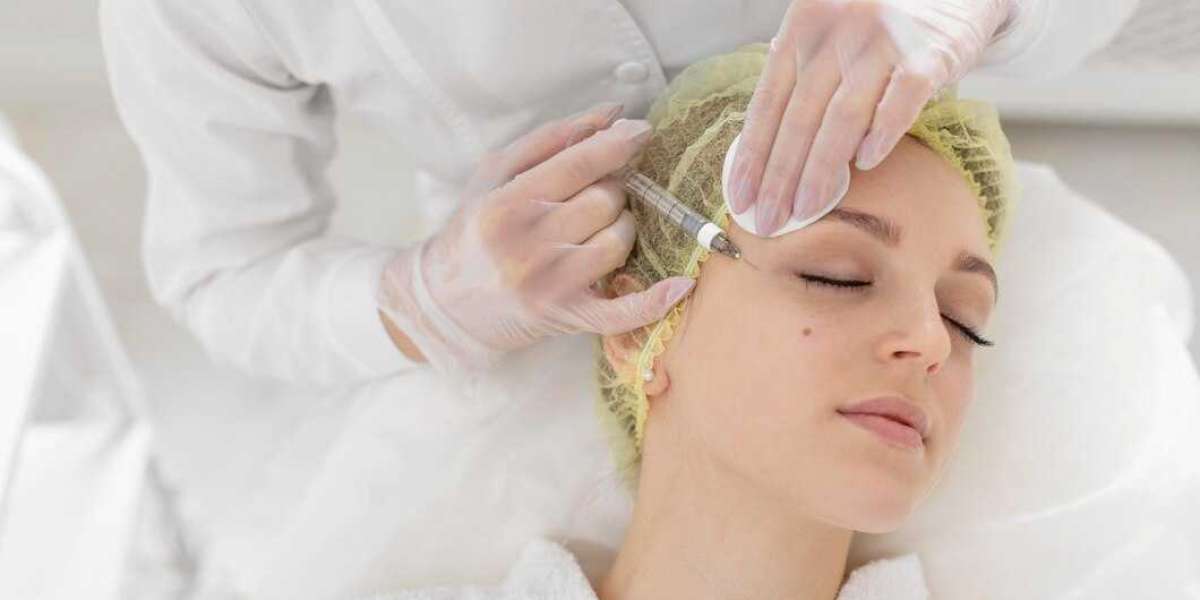Hyperhidrosis, a condition characterized by excessive sweating, can be an embarrassing and uncomfortable experience for many individuals. Fortunately, Dubai offers several effective treatments for hyperhidrosis, helping patients regain control over their condition. The treatment options vary from non-invasive procedures like Botox injections to advanced therapies such as miraDry, which targets sweat glands.
In Dubai’s top medical centers and polyclinics, patients can consult with dermatologists and other specialists to explore treatment plans that best suit their individual needs. These treatments are designed to reduce excessive sweating, improve quality of life, and restore confidence.
Hyperhidrosis is a medical condition that causes excessive sweating beyond what is necessary to regulate body temperature. It can occur in localized areas, such as the underarms, palms, feet, or face, and can significantly impact a person's quality of life, leading to embarrassment, social anxiety, and physical discomfort. Fortunately, Dubai offers a variety of advanced treatments for hyperhidrosis, providing individuals with options to control and manage the condition effectively.
Types of Hyperhidrosis: There are two primary types of hyperhidrosis:
Primary Hyperhidrosis: This form of excessive sweating occurs without any underlying medical condition. It usually affects specific areas such as the hands, feet, underarms, or face.
Secondary Hyperhidrosis: This type of sweating is caused by an underlying health condition, such as obesity, menopause, thyroid issues, diabetes, or infections. The sweating can occur throughout the body rather than being localized.
In Dubai, a variety of treatments are available to manage and treat both primary and secondary hyperhidrosis.
Treatment Options for Hyperhidrosis in Dubai
1. Botox Injections for Hyperhidrosis Botox, or botulinum toxin, is one of the most popular and effective treatments for hyperhidrosis. Botox injections work by blocking the nerves responsible for triggering sweat glands, effectively reducing excessive sweating in the treated areas. It is particularly effective for underarm hyperhidrosis but can also be used for sweating on the hands, feet, and face.
The procedure is minimally invasive, and most patients experience noticeable results within a few days of treatment. The effects typically last for 4 to 6 months, after which repeat treatments may be required to maintain the results. Botox is an ideal option for those seeking a non-surgical solution with little to no downtime.
2. MiraDry Treatment MiraDry is a non-invasive, FDA-approved treatment designed specifically for underarm hyperhidrosis. It uses microwave technology to target and eliminate sweat glands in the underarm area. Once the sweat glands are eliminated, sweating is significantly reduced or stopped entirely.
The procedure is quick, typically taking about an hour, and requires minimal recovery time. Many patients see permanent results after just one or two treatments. MiraDry is particularly beneficial for individuals who have not responded well to other treatments, such as antiperspirants or oral medications.
3. Iontophoresis Iontophoresis is a non-invasive treatment that uses electrical currents to temporarily reduce sweating. The procedure involves placing the affected body parts, such as the hands or feet, in a shallow tray of water while a low electrical current is passed through the water. This process helps block the sweat glands, reducing sweating.
Although the effects are not permanent, iontophoresis provides relief for several weeks or months. It is a safe and effective treatment that can be performed regularly at home or in a clinic setting. It is most effective for localized hyperhidrosis, especially in the hands and feet.
4. Oral Medications Anticholinergic medications, such as oxybutynin and glycopyrrolate, can help manage hyperhidrosis by blocking the chemicals that trigger sweat production. These medications are typically prescribed when other treatments have been ineffective or if the patient experiences generalized sweating (secondary hyperhidrosis).
However, oral medications can have side effects, such as dry mouth, blurred vision, and urinary retention, and are often used as a short-term solution or in conjunction with other treatments.
5. Surgery (Sympathectomy) For severe cases of hyperhidrosis that do not respond to other treatments, surgery may be considered. Sympathectomy involves cutting, clipping, or removing the nerves responsible for excessive sweating. This is usually reserved for patients with primary hyperhidrosis who have not found relief from less invasive treatments.
The surgery is typically performed under general anesthesia and may have a recovery time of several weeks. While it can provide long-lasting relief, it is not without risks, and it is generally recommended only after all other options have been explored.
6. Laser Treatment Laser therapy is a minimally invasive treatment that targets and destroys the sweat glands under the skin. The procedure uses concentrated laser energy to selectively target the sweat glands in areas such as the underarms.
Laser treatment has gained popularity as it is relatively quick, requires little downtime, and can result in long-lasting effects. The treatment is especially effective for underarm hyperhidrosis, and results can last for several months or even years after the procedure.
7. Lifestyle Changes and Topical Treatments For mild cases of hyperhidrosis, lifestyle changes such as using prescription-strength antiperspirants, wearing loose and breathable clothing, and avoiding triggers (such as stress or hot environments) can be helpful. Topical treatments like aluminum chloride-based antiperspirants are often prescribed for localized sweating, and they can be effective when used consistently.


